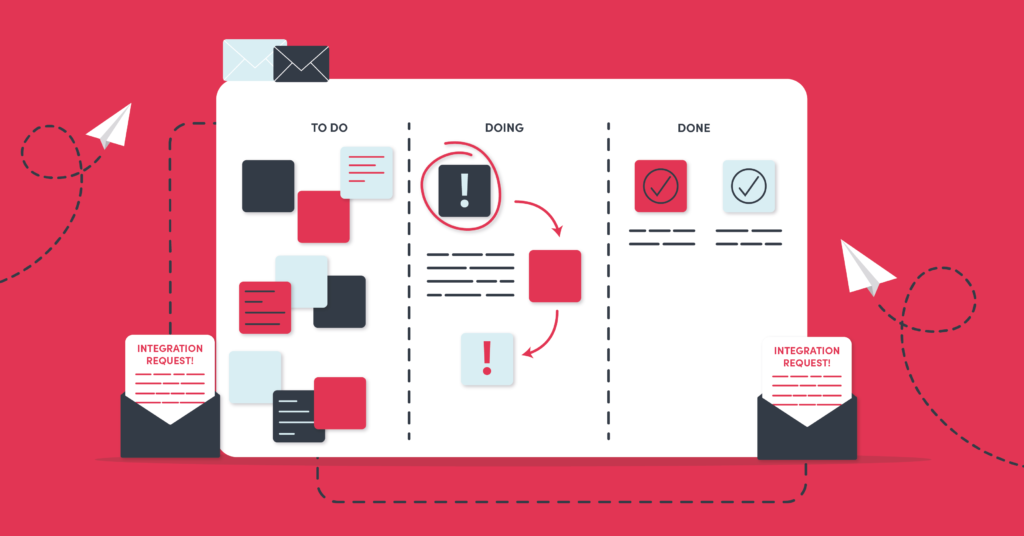
Ensuring your software product is fit for purpose, and up to date to stay competitive as well as being innovative ensuring the product stands out in the market is a challenge for any development team. Even more so when they are not only trying to develop core product features but also keep up with customers’ API integration requests.
For those who aren’t sure, an API integration request is a customer asking for a new integration to be built to connect data from your SaaS to another SaaS application via APIs. Other requests a development team may receive are method requests. This is when a customer asks for an API to be extended to include an additional method, at Cyclr our dedicated Connector Team does this.
The demand for software integration has skyrocketed, leaving development teams grappling with an increasing number of API integration requests. We take a look at several reasons why developers may be struggling to keep up with integration demands. As well as the practical solutions to address these challenges.
Why do developers struggle to keep up with integration requests?
1. Complexity and Diverse Ecosystems
One of the primary reasons developers find it challenging to keep up with integration requests is the complexity of modern software ecosystems. Businesses are using a myriad of tools and platforms, each with its own set of APIs and integration requirements. Navigating this intricate landscape can be time-consuming and resource-intensive for development teams.
Solution: Adopt a unified integration platform that provides a centralised hub for managing various integrations. This can streamline the process, allowing developers to work with a standardised set of tools and APIs, reducing the complexity associated with diverse ecosystems.
2. Limited Resources and Competing Priorities
In many organisations, development teams are faced with tight deadlines and limited resources. As integration requests pile up, developers often find themselves torn between addressing these requests and meeting other critical project deadlines. This juggling act can lead to burnout and hinder the overall productivity of the development team.
Solution: Prioritise integration efforts based on business impact and urgency. Implement project management methodologies, such as Agile, to ensure efficient resource allocation and collaboration. Additionally, consider expanding the development team or allocating dedicated resources specifically for integration tasks.
3. Lack of Automation in Integration Processes
Manual integration processes are not only time-consuming but also prone to errors. Developers may find themselves repeating similar integration tasks, leading to inefficiencies and delays. The absence of automation in integration processes is a significant bottleneck in keeping up with the increasing demand.
Solution: Invest in integration tools that offer automation capabilities. Automation not only accelerates the integration process but also reduces the risk of human error. By automating routine and repetitive tasks, developers can focus on more complex and value-added aspects of integration.
4. Inadequate Documentation and Knowledge Transfer
In a fast-paced development environment, knowledge transfer and documentation are often overlooked. If developers lack comprehensive documentation for existing integrations or if there’s a lack of knowledge transfer between team members, new developers may struggle to understand and contribute to the integration efforts.
Solution: Establish robust documentation practices for all integrations. This includes clear documentation of APIs, integration workflows, and any custom code. Encourage knowledge-sharing sessions within the development team to ensure that everyone is well-versed in the existing integrations and can contribute effectively to new ones.
5. Failure to Embrace Modern Integration Architectures
Traditional integration approaches may not be well-suited to the demands of the current business landscape. Legacy systems and architectures can hinder the speed and flexibility required for seamless integrations. Developers may find it challenging to integrate modern applications with outdated infrastructure.
Solution: Embrace modern integration architectures, such as microservices and event-driven architectures. These approaches offer greater flexibility and scalability, allowing developers to respond more efficiently to integration requests. Investing in the modernisation of infrastructure can pay dividends in terms of increased agility.
Move Forward with Integration and Reduce Developer Backlog
The challenges faced by developers in keeping up with integration requests are multifaceted, but they are not insurmountable. By addressing the root causes and implementing practical solutions, organisations can empower their development teams to handle integration demands more effectively.
From adopting unified integration platforms, such as an embedded iPaaS like Cyclr to prioritising automation and documentation, the path to overcoming integration challenges is paved with strategic decisions and a commitment to streamlining processes.
As businesses continue to evolve, so too must their approach to integration, ensuring that developers can not only keep up with but thrive in the face of increasing integration requests.
Are you interested in unburdening your developers with API integration requests?
Get in touch and we’ll introduce you to our embedded integration platform, Cyclr.
An integration toolkit empowering your teams, whether development teams or not with the help of low code functionality to deliver integrations fast.



